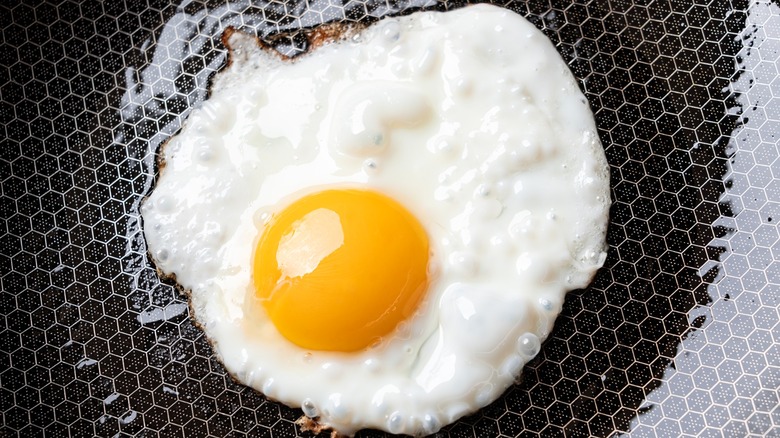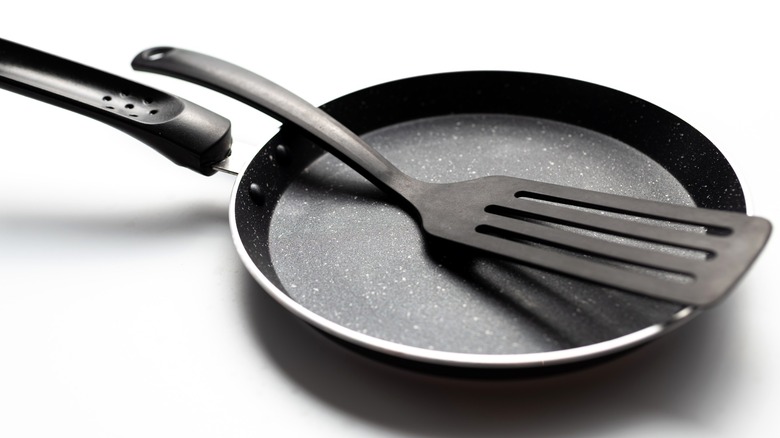Flipping Eggs Is Easier With One Type Of Spatula
Making fried eggs is one of the most straightforward culinary endeavors one can take on –– or so one would think. The truth is, cooking a superb fried egg takes finesse (and an herby ingredient if you want an extra burst of flavor). It also requires having the right tools for the job. Some folks assume that any spatula they have lying around will work to flip the eggs, and while you can probably get by with that old one sitting in the back of your utensil drawer, there is a more specific tool that makes the task much easier.
Instead of grabbing the first spatula in sight, reach for a fish spatula. The business end of this utensil is thin and bendy, making the task of getting under the egg so it can be turned over go smoother. They also have a longer surface area than their flipping-challenged counterparts, which ensures that you don't have to try flipping an egg with only half of it being leveraged by the spatula.
You can purchase fish spatulas that come with a non-stick coating, but many are made of metal. While conventional wisdom dictates that you never use a metal utensil on a non-stick pan, this is one case where you want to bend the rules if your spatula isn't coated. However, using the correct utensil shouldn't change the entire process. If you think you have come up with a workaround to this and decide it is a good idea to use a stainless steel pan so your non-stick doesn't get scratched, think again.
A perfect egg takes more than the right spatula
A fish spatula may be the best tool to flip your eggs, but frying them all starts with using the correct cooking surface, which should be a non-stick pan. No one wants a fried egg with a broken yolk. Even if you can cook one or two impeccably in a pan with a metal surface, your luck will eventually run out, and you will notice them sticking to the pan and breaking apart when you attempt to flip them over.
Oil and heat are also factors that need to be considered before you ever reach for a spatula. You don't want to drown your pan in oil, as the non-stick coating will do most of the work in keeping the egg from sticking. The stove temperature should be set to low, otherwise, you end up with a crusty, dried-out egg. It is also vital to take them off the stove before they are completely done and let them rest in the pan to finish cooking from the residual heat.
Using cold eggs is another part of frying them to perfection. If you reside in Europe, you likely don't refrigerate your eggs, but the rest of us benefit from them not being warmed up before they hit the pan. Just as you wouldn't want to wash store-bought eggs, you wouldn't want your timing to be thrown off by placing a warm one in the pan, which could prematurely ruin your chances of giving it the perfect flip with a fish spatula.

